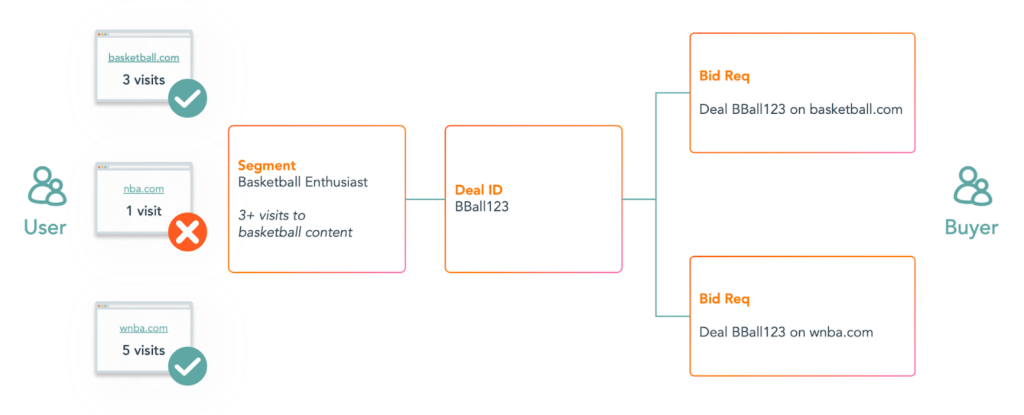Solving the Contextual Conundrum

Authored by: Miranda Dennis, Associate Director, Product Marketing
First-party data has become the most indispensable asset in digital advertising. And everyone wants a piece of it.
Advertisers are armed with CRM data; publishers own a wealth of first-party signals; and leveraging this data may be the most effective and scalable strategy for cookie-less targeting. There are so many flavors of first-party data that are well-known, tested, and trusted today.
But what about contextual?
Contextual targeting is a critical, yet often outdated form of cookie-less targeting on the open web. It enriches your campaign scale and is privacy-safe.
Cross-domain identity solutions only account for maybe 30% of addressable supply, so it’s imperative to bolster your cookie-less solutions with contextual first-party data. What might have been previously perceived as a dusty tactic of the past has been brushed off and emerged as a leading alternative in cookie-less targeting strategies.
Today, we’ll take a deep dive into the current state of contextual and show you how the elevated contextual of TripleLift Audiences drives outcomes for both our buyers and publishers.
Contextual Targeting Today
Traditional contextual advertising matches a webpage’s content with a brand’s content alignment and targets ads based on the page’s content—like being served an advertisement for pet food while reading content about cats.
This is executed through various signals loaded in bid request attributes to accurately match the ad to a web domain. These signals include the content itself, URL, user intent, sentiment analysis, historical performance data, metadata, keywords, and so many more.
We’ve known contextual works well and has been an effective tool in a media planner’s toolkit for a long time. With TripleLift Audiences, contextual transforms into a future-proofed first-party data option by converting those attributes into targetable, curated segments.
Elevating Contextual with User Behavior
TripleLift Audiences segments inventory using a contextual x behavioral approach. This means we look at the number of visits a user makes before considering them “in-segment” for a particular segment.
Let’s take a look at how this works:

Looking at the left side of the above diagram you can see a behavioral segment defined by TripleLift for a “Basketball Enthusiast” as a person who visits content related to basketball across the same publisher three or more times. While the user has visited multiple basketball sites, you can see they don’t fall “in-segment” on nba.com because they have only visited that domain once.
This allows us to build segments based on behavior not just the content of a page. And we do this on a per-publisher basis.
Elevating Contextual with Accuracy and Reach
Contextual can be improved by page-level curation — not just the URL level. Page-level curation ensures the same broad reach as URL-level curation, but with more accuracy and fewer wasted impressions.
Imagine you’re researching the best cat treats across publishers. You’d want to look at the content of the page at the page-level and not just how the URL gets categorized. Let’s look at these examples to find the best opportunity for reaching cat lovers and targeting all the cat treats ads to them, we would want:
| Site | URL | Domain-level (collection of many pages) | Page-Level (one page) |
| Totally Real Pet Publisher | TotallyRealPetPublisher.com/best-cat-adoption-rescues | Pets Missed opportunity — too broad! | Cats Eligible for “cat treat content” segmentation |
| Totally Real Cat Publisher | TotallyRealCatpublisher.com/privacy-policy | Cats Wasted impression – a user visiting the privacy policy of a website is less likely to fall in-segment | Not eligible for segmentation |
This level of precision is important for contextual, which can err on the side of being too broad. TripleLift Audiences works because it finds the right balance of accuracy and precision, without sacrificing scale.
Contextual Targeting With TripleLift is Better
You’re now prepared to reach cat lovers looking to buy treats—or cats who have found their owners’ credit cards. But don’t stop there. TripleLift Audiences elevates the game and makes it possible to find so many more audiences with accuracy and scale.
Learn more about how TripleLift Audiences can help you achieve better results. Explore our most recent case study proving how contextual targeting can help brands achieve results in a privacy-safe environment.
The post Solving the Contextual Conundrum appeared first on TripleLift.

